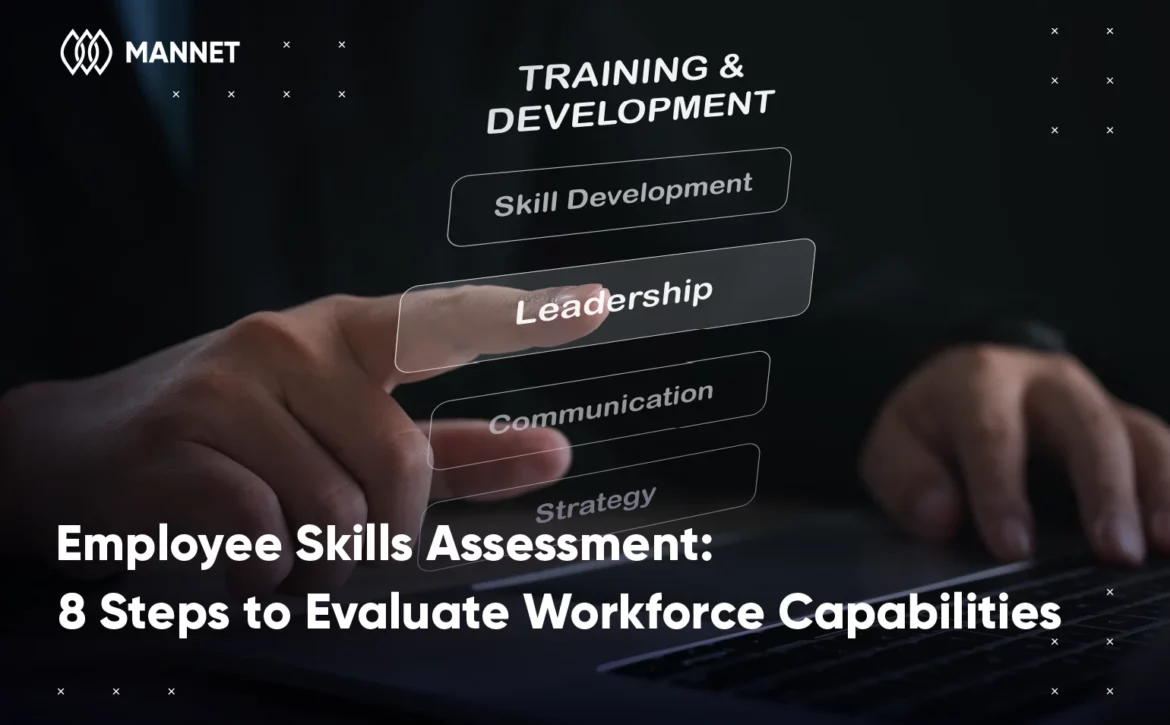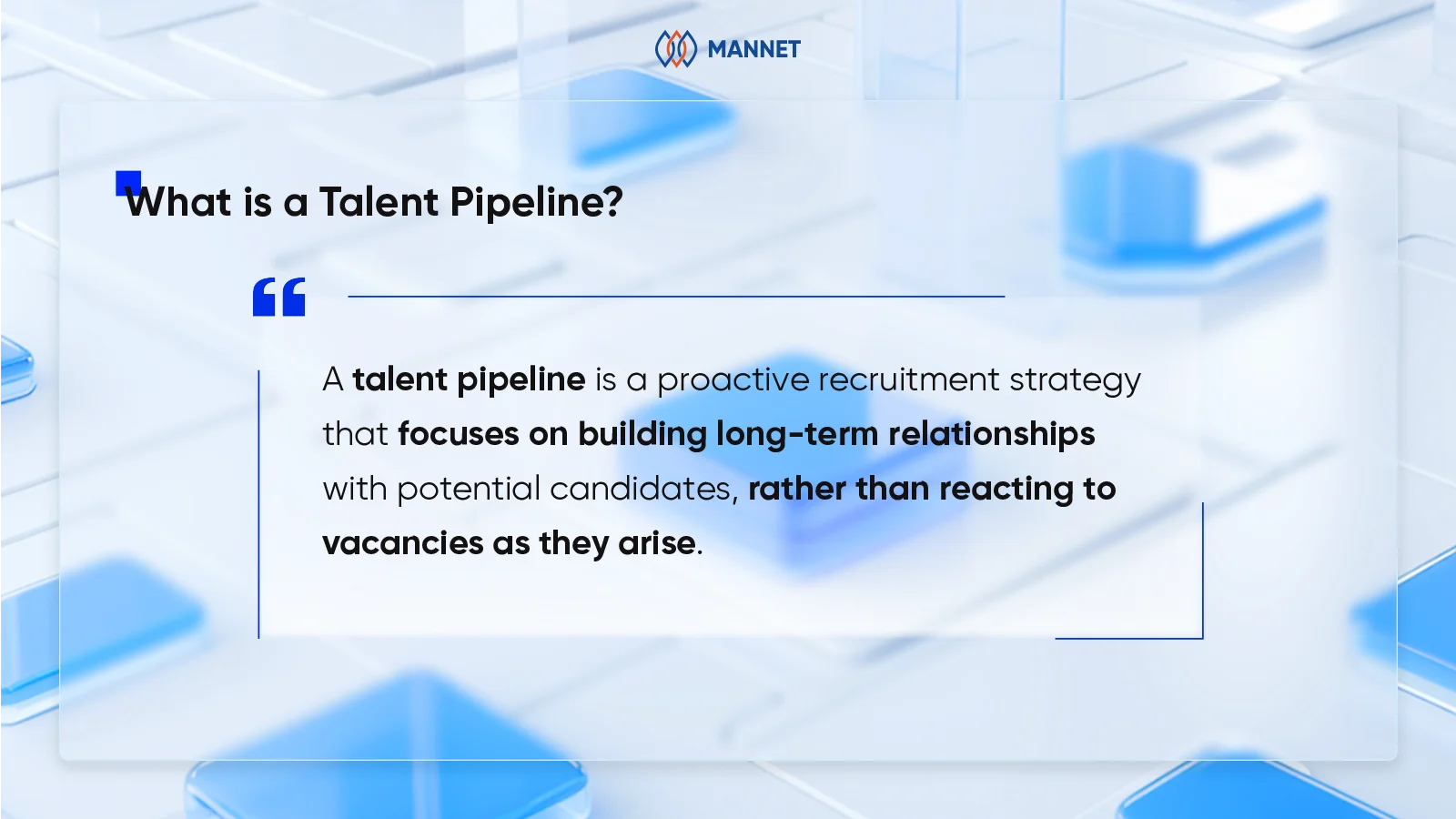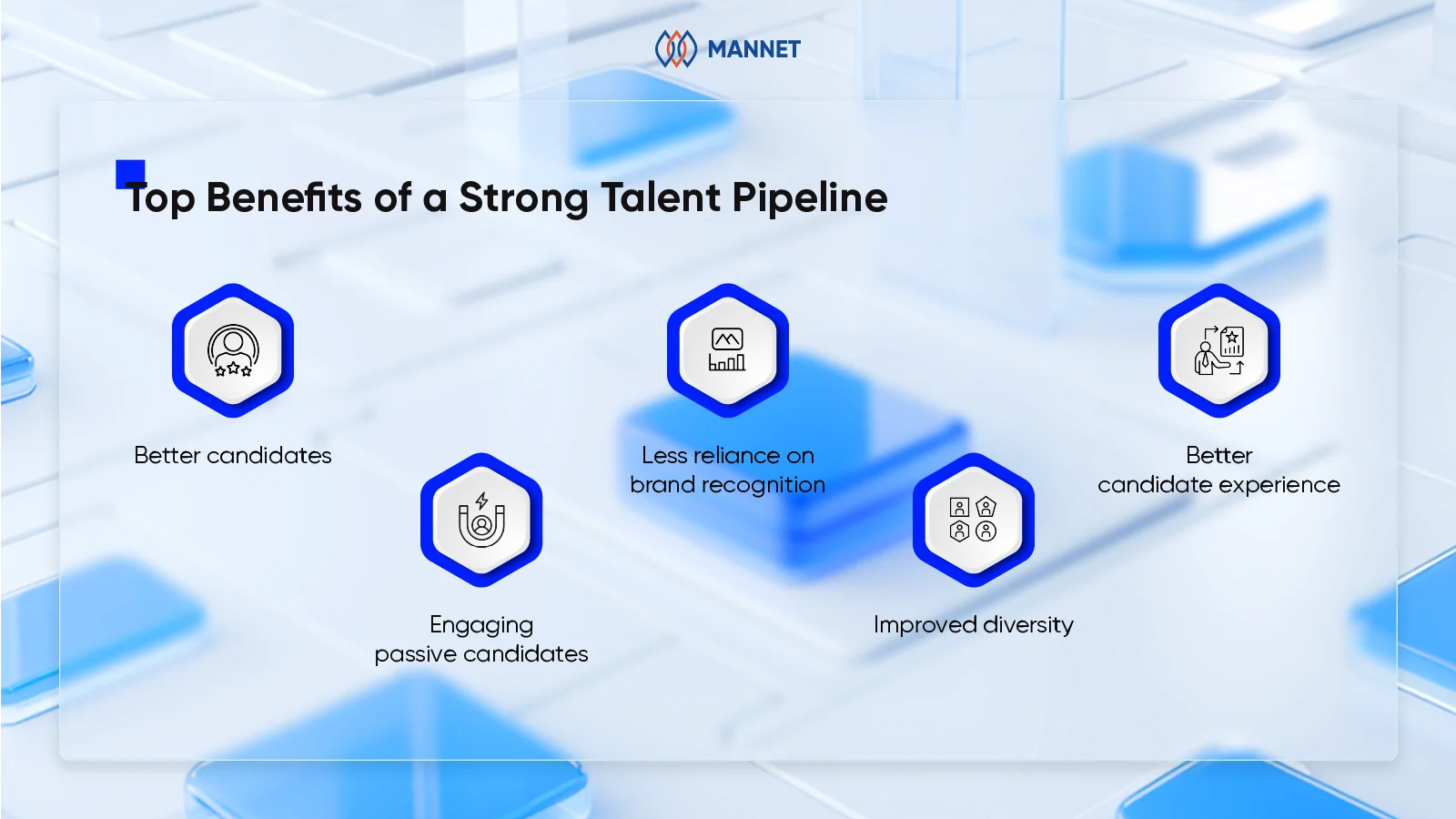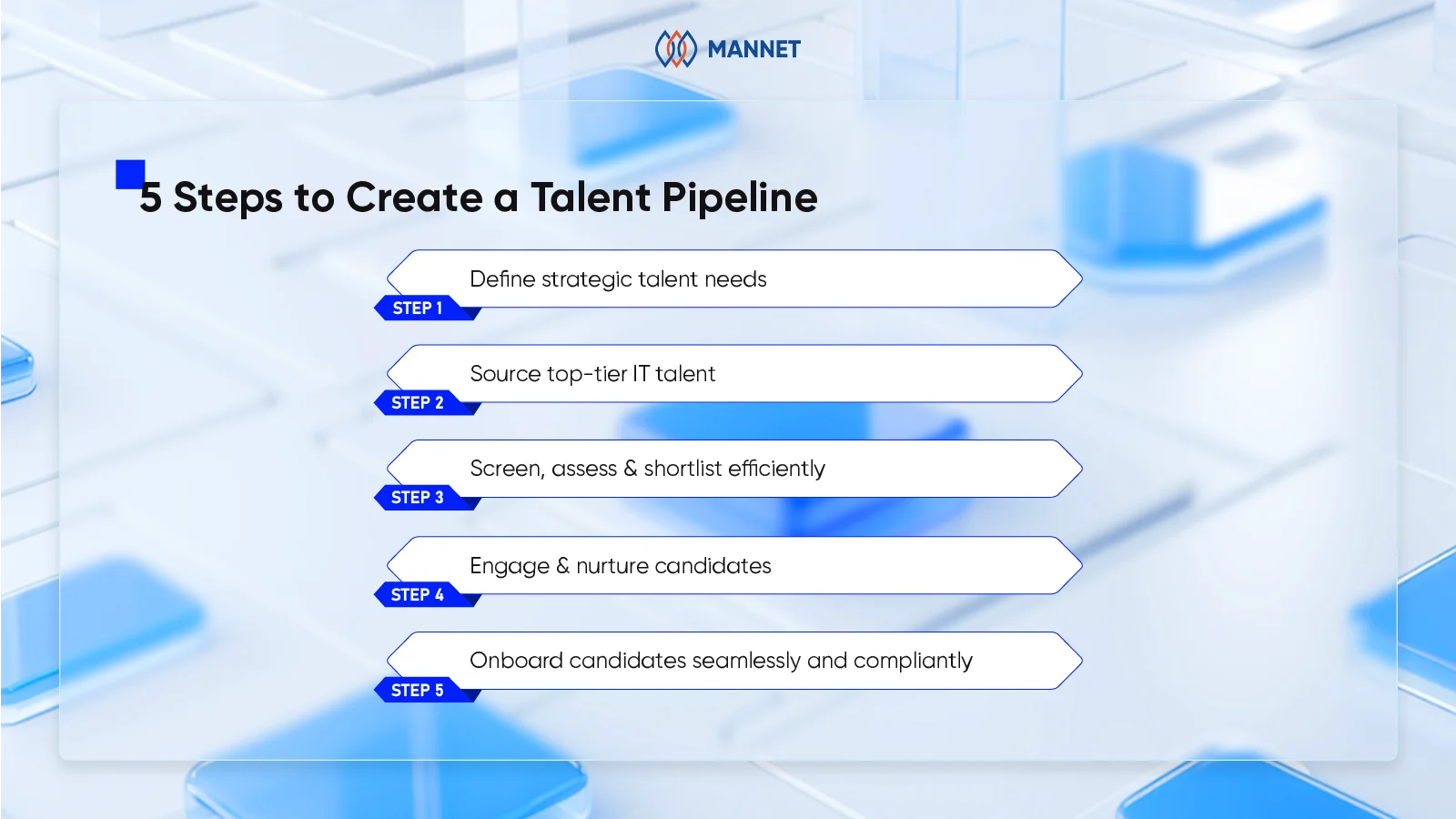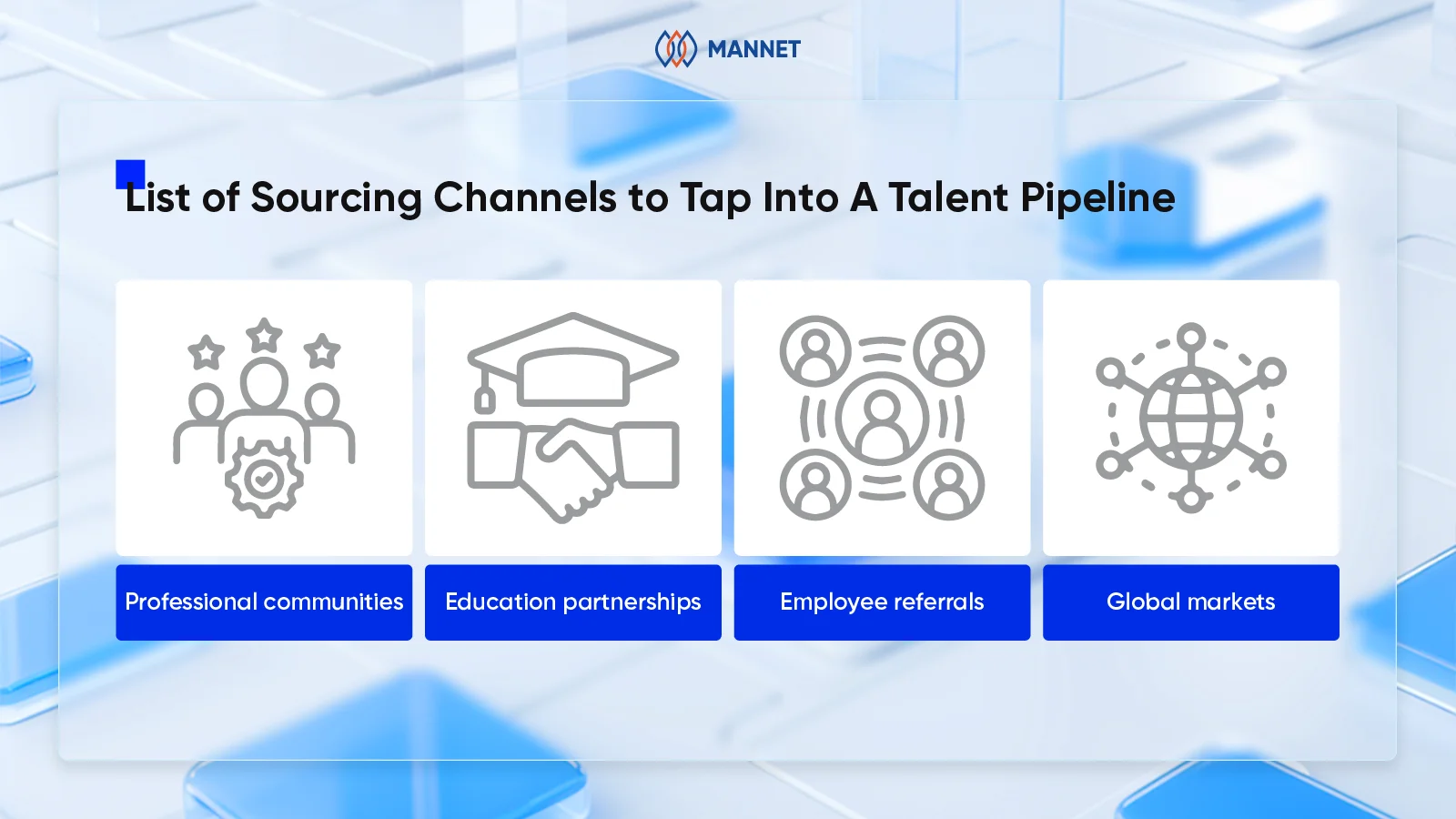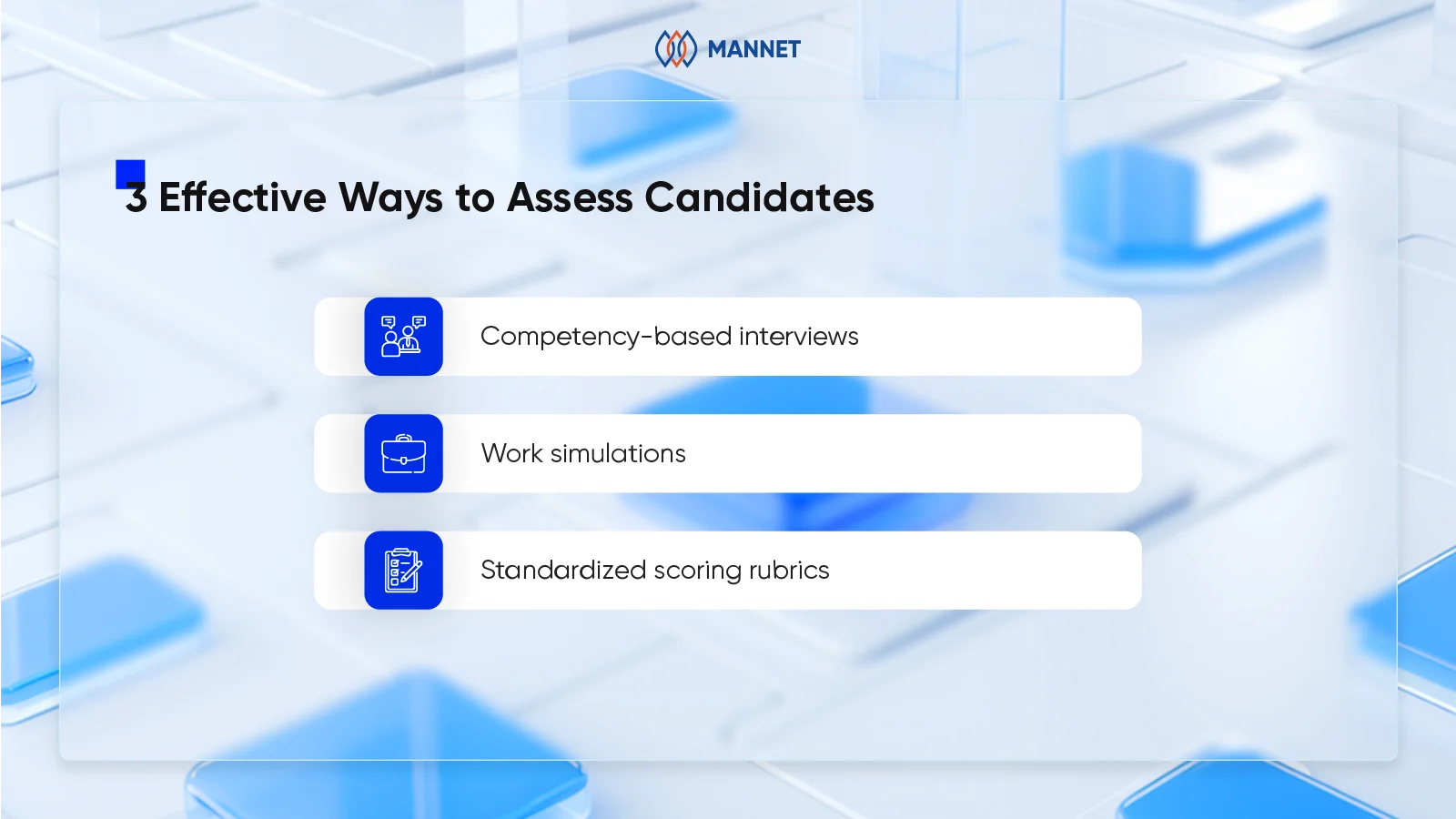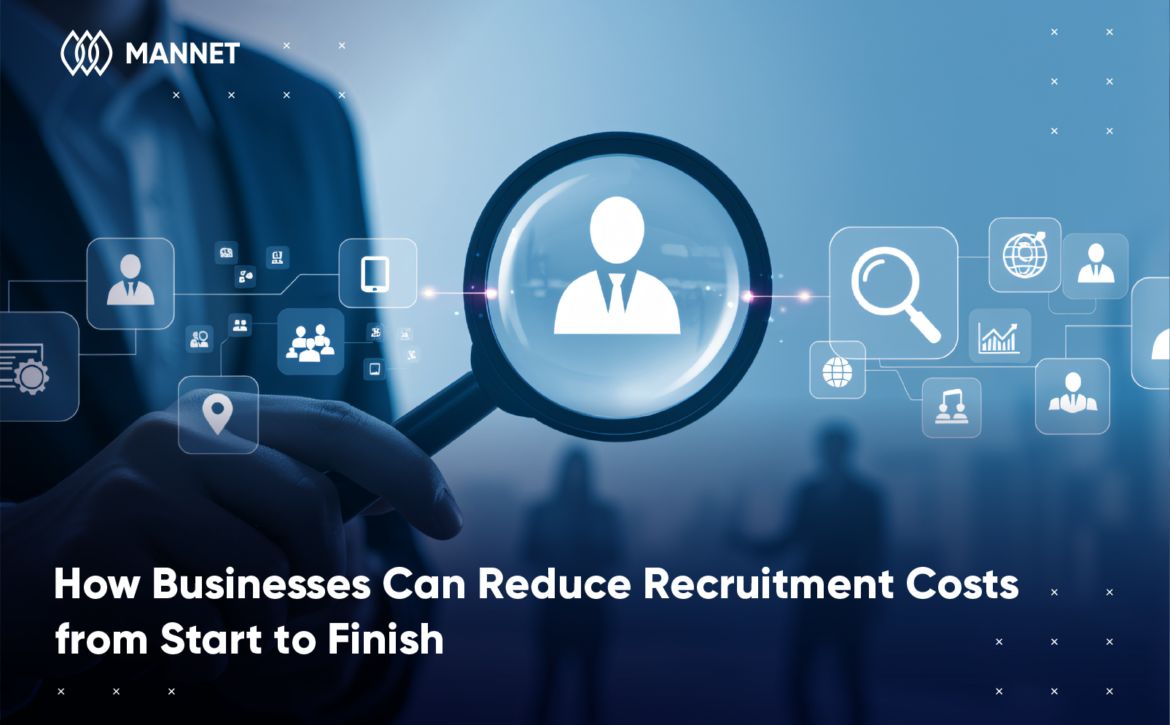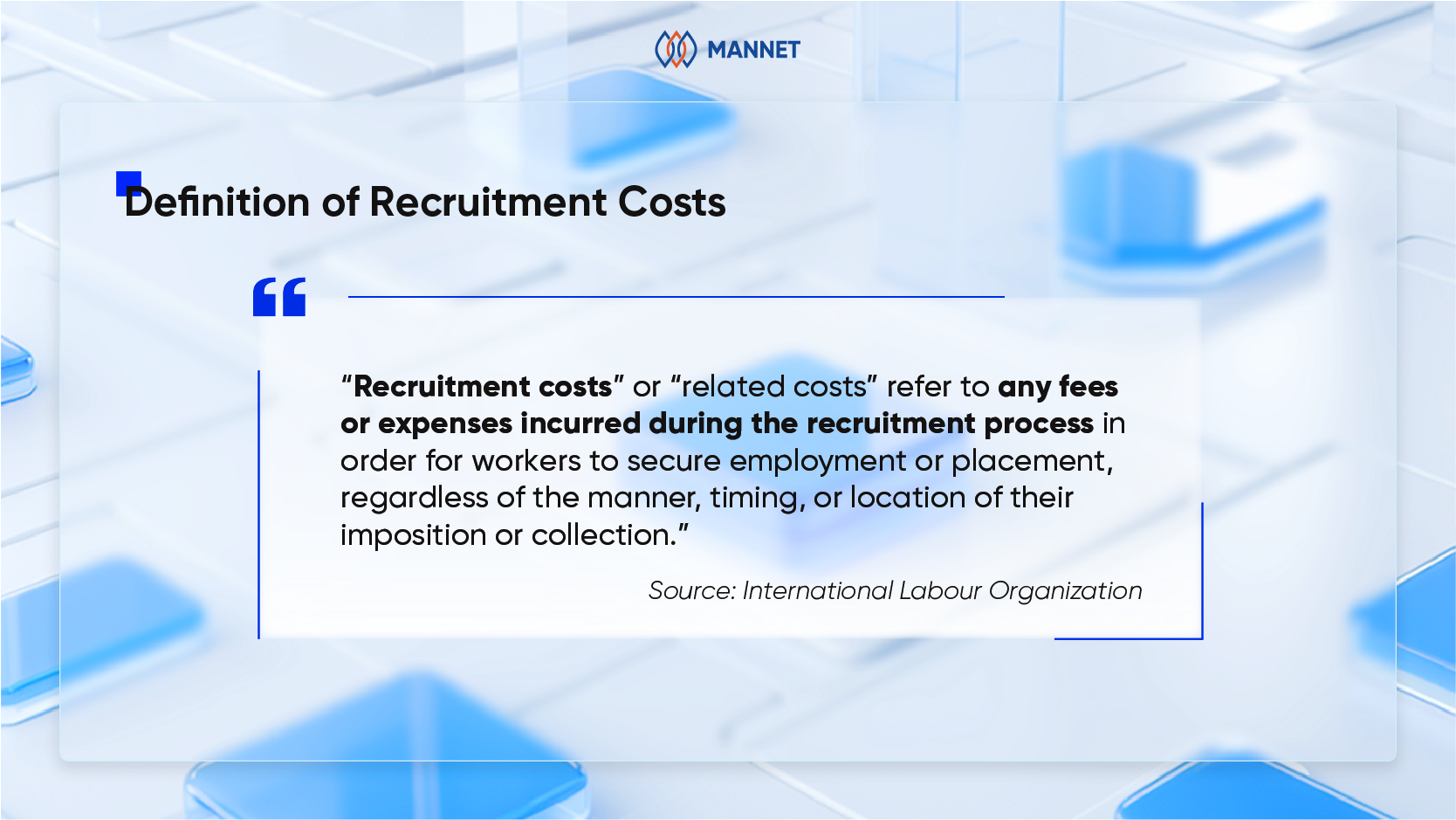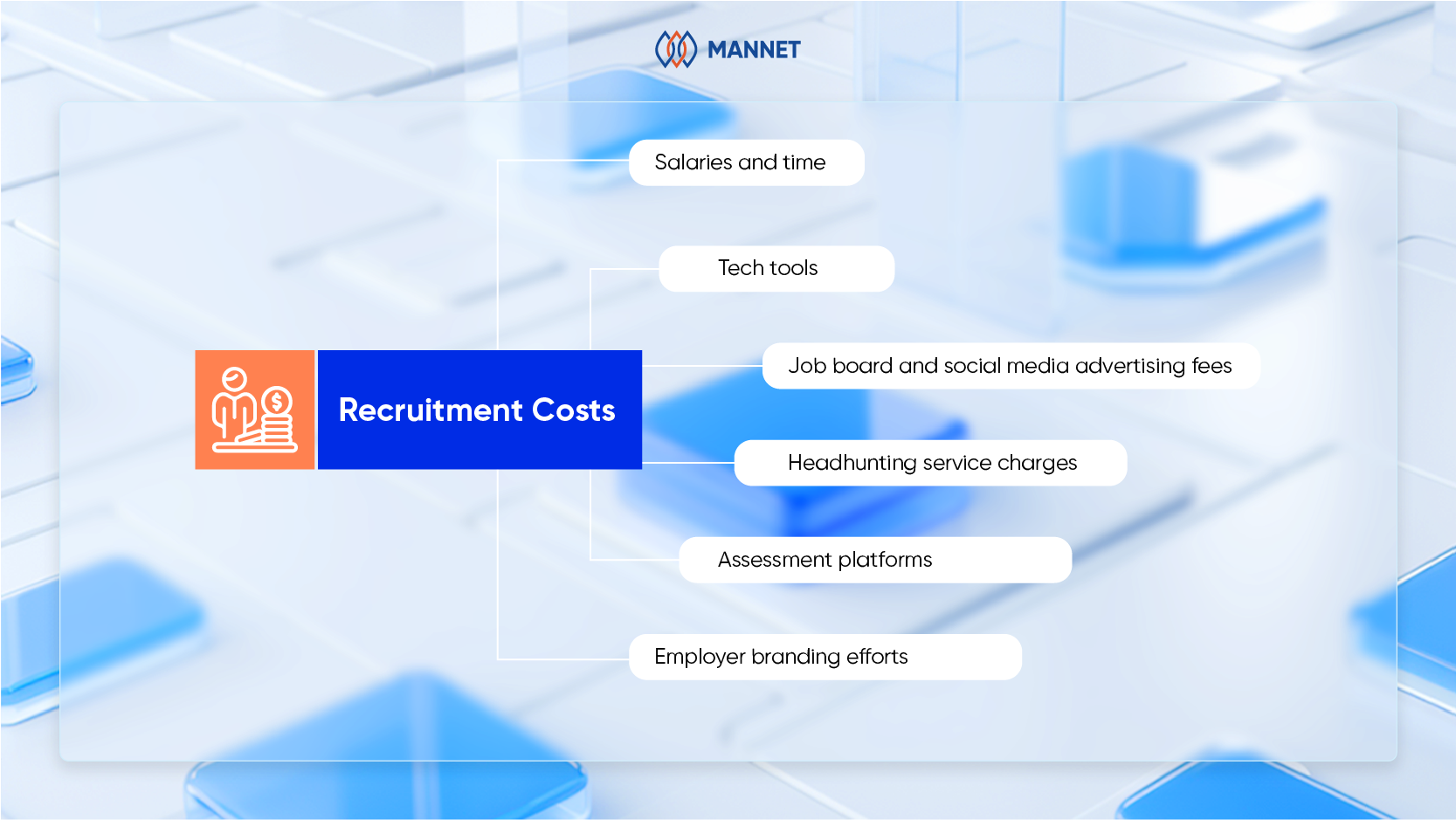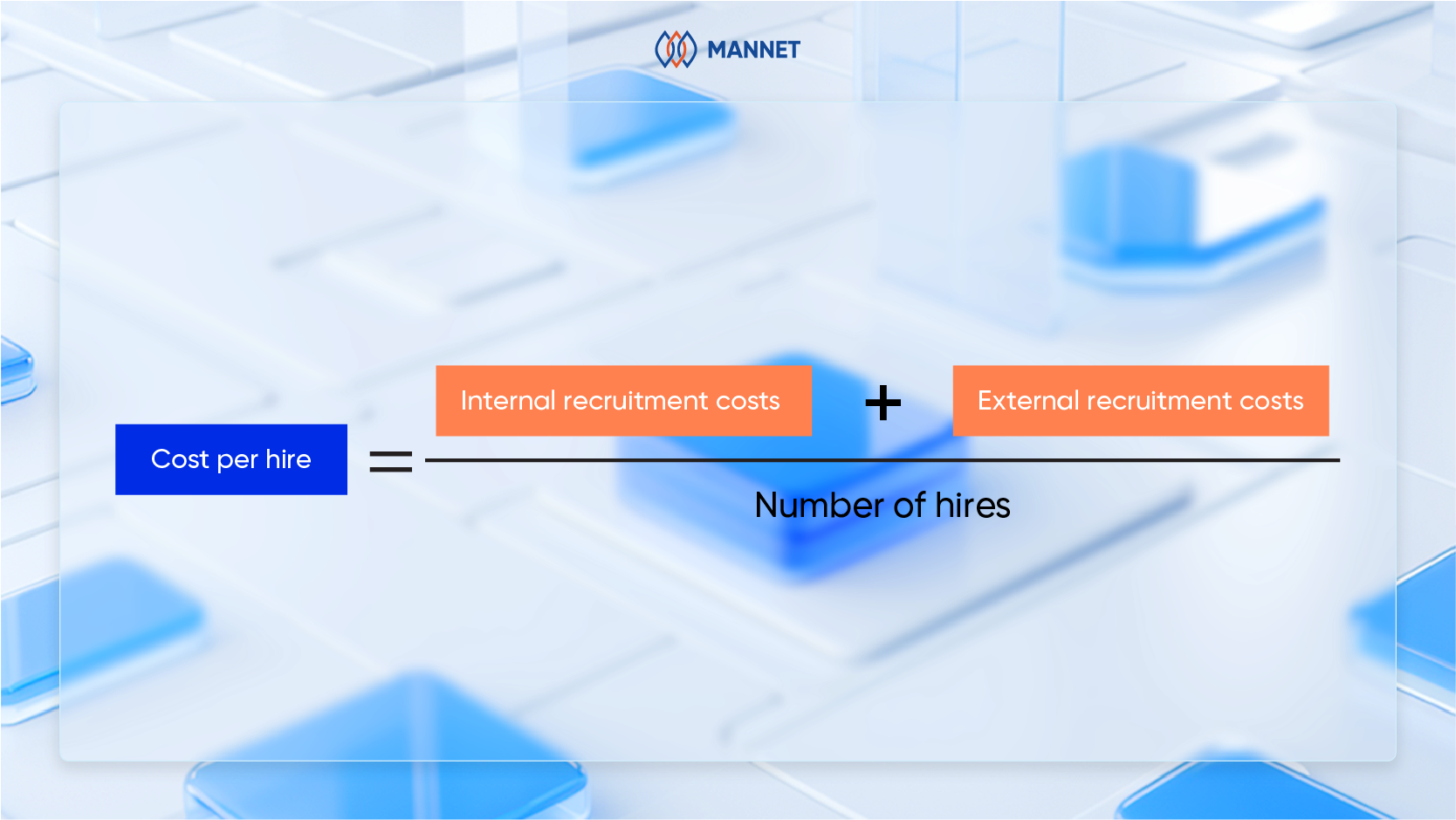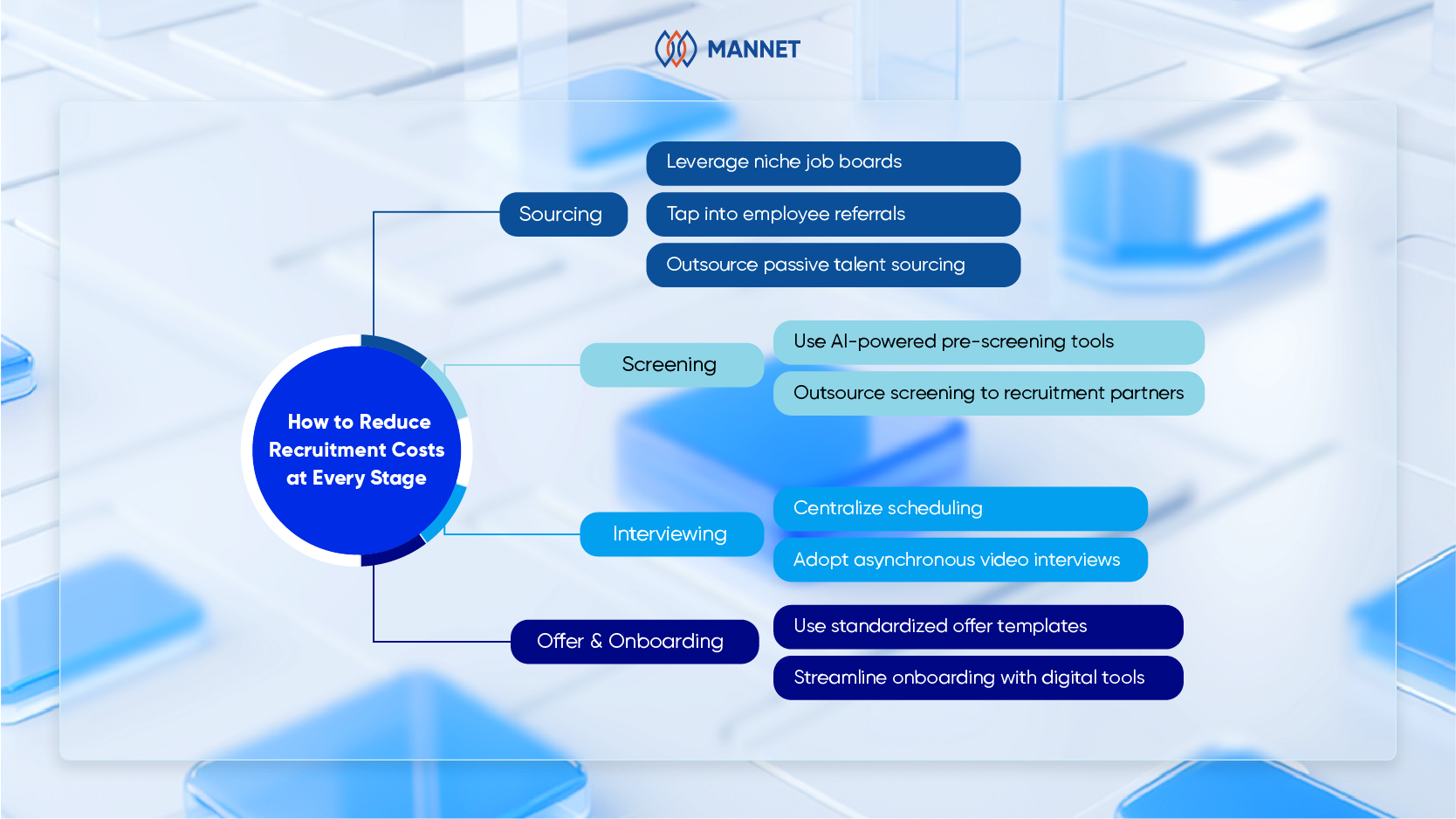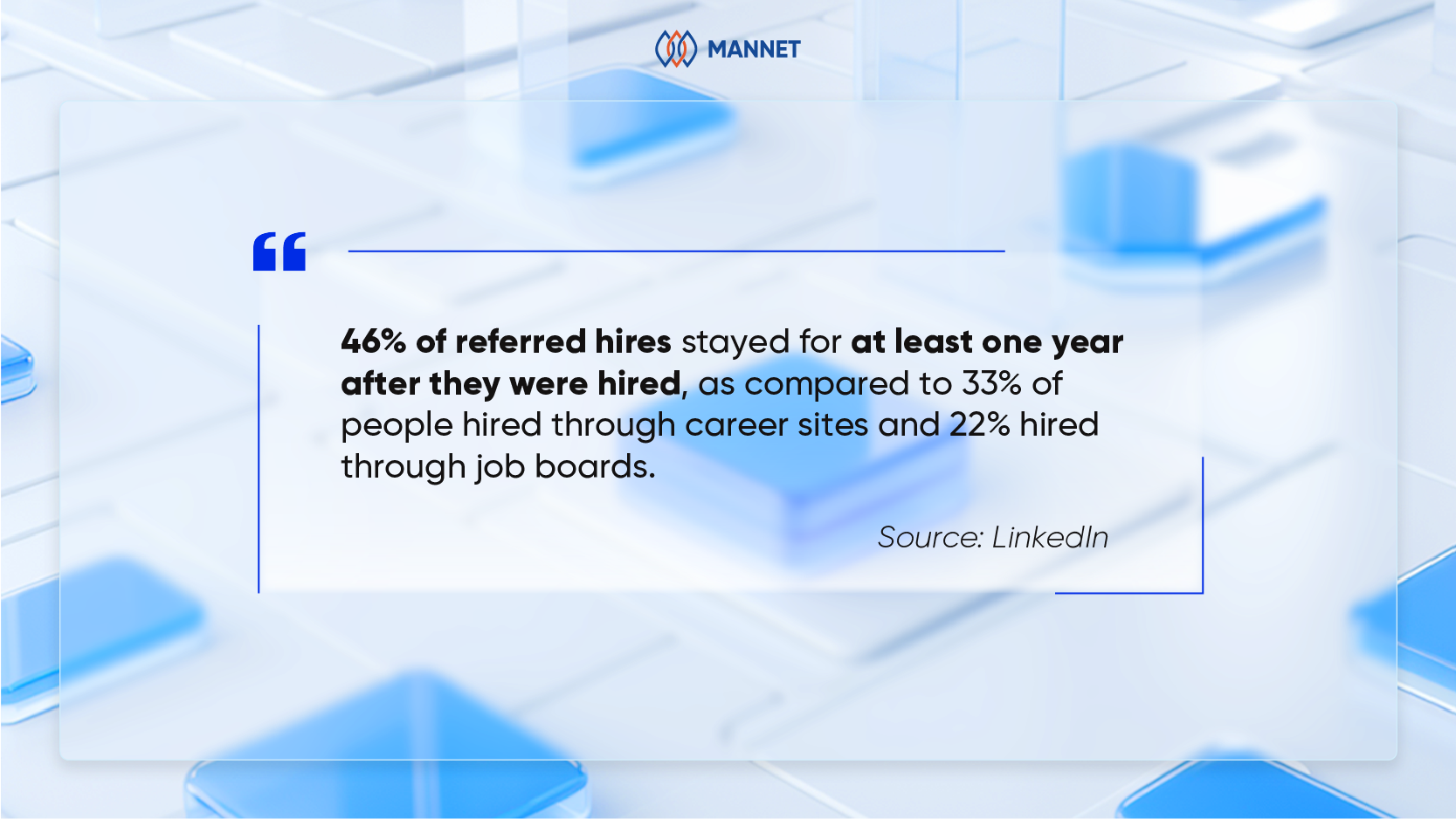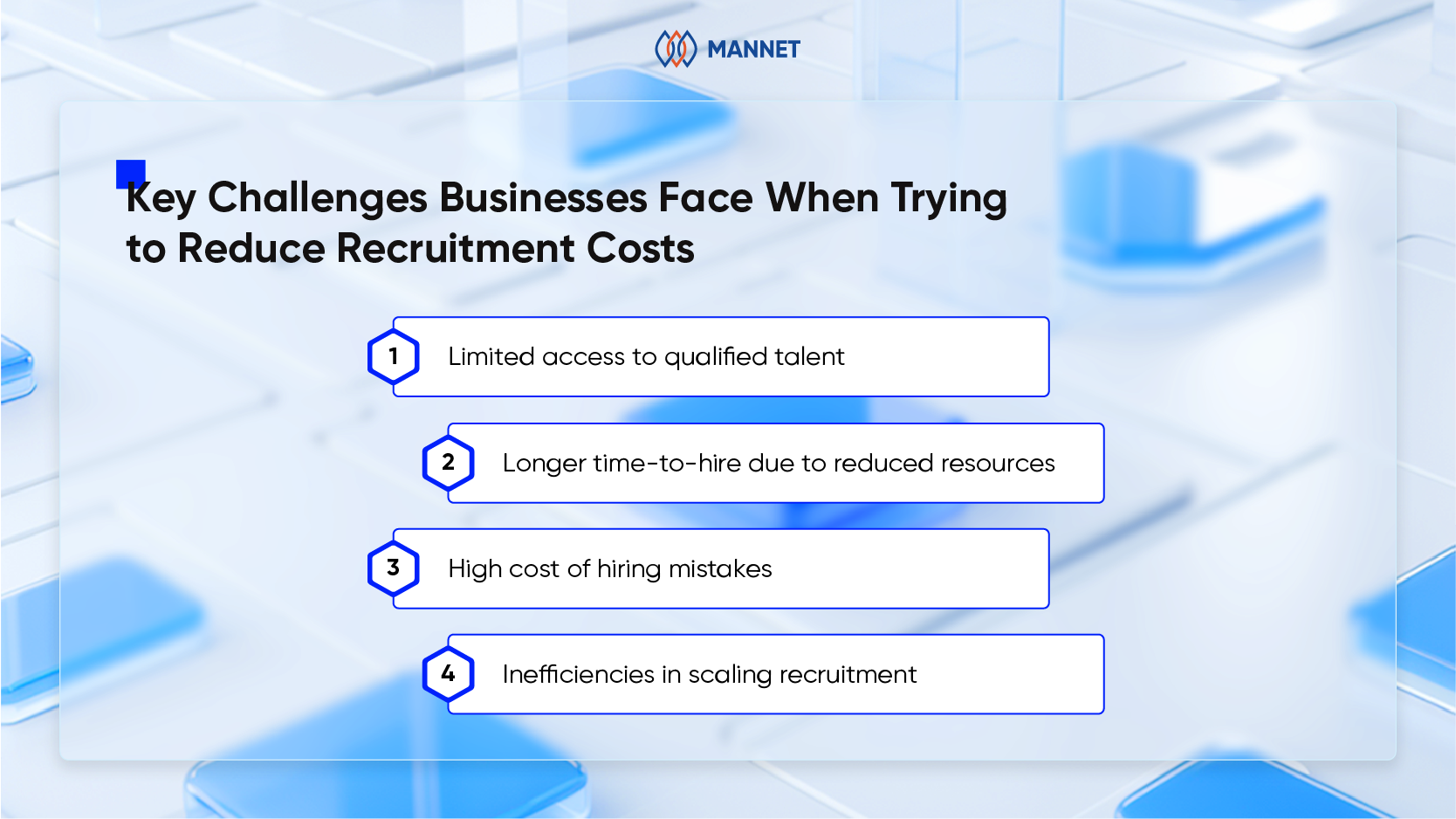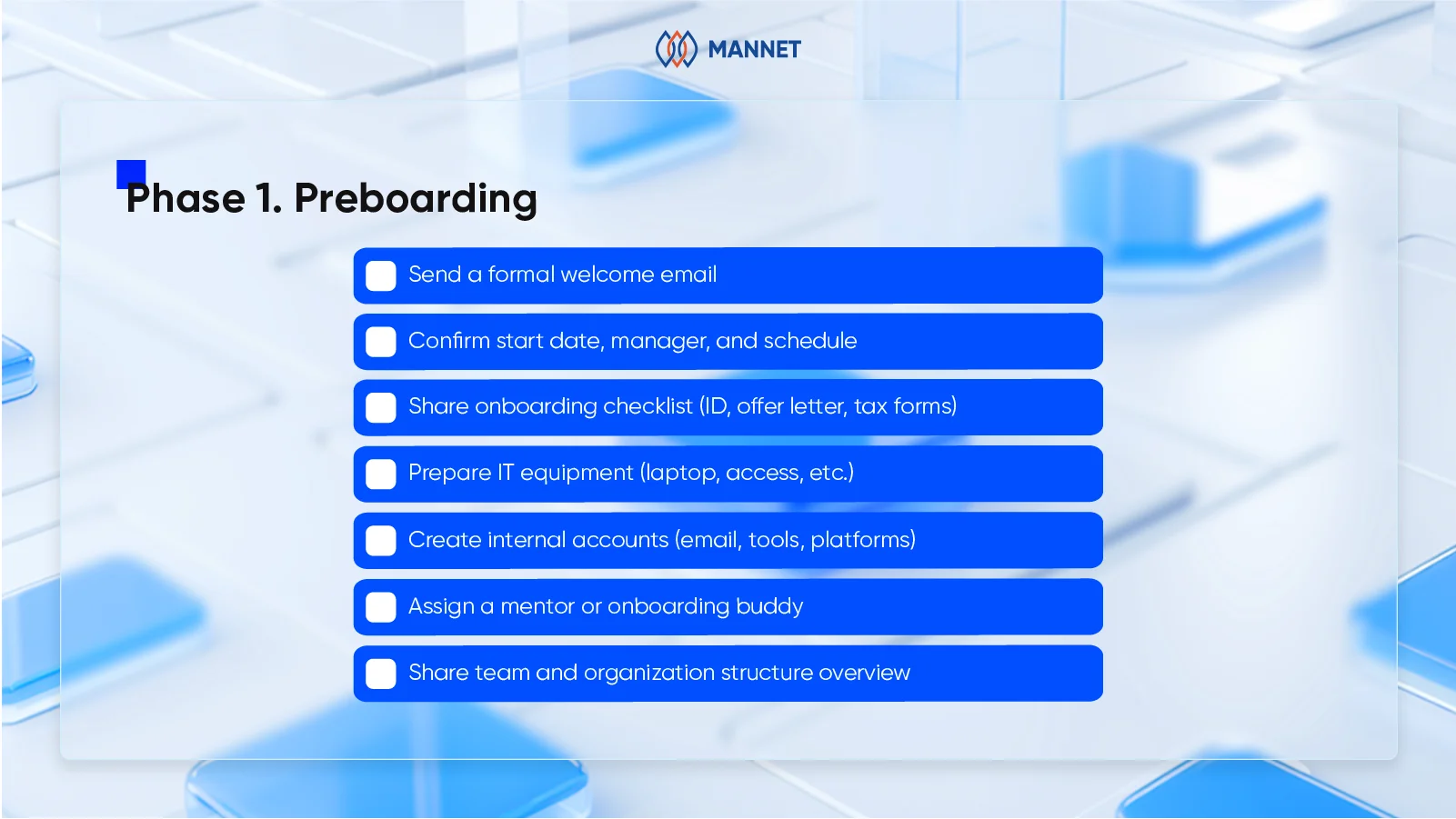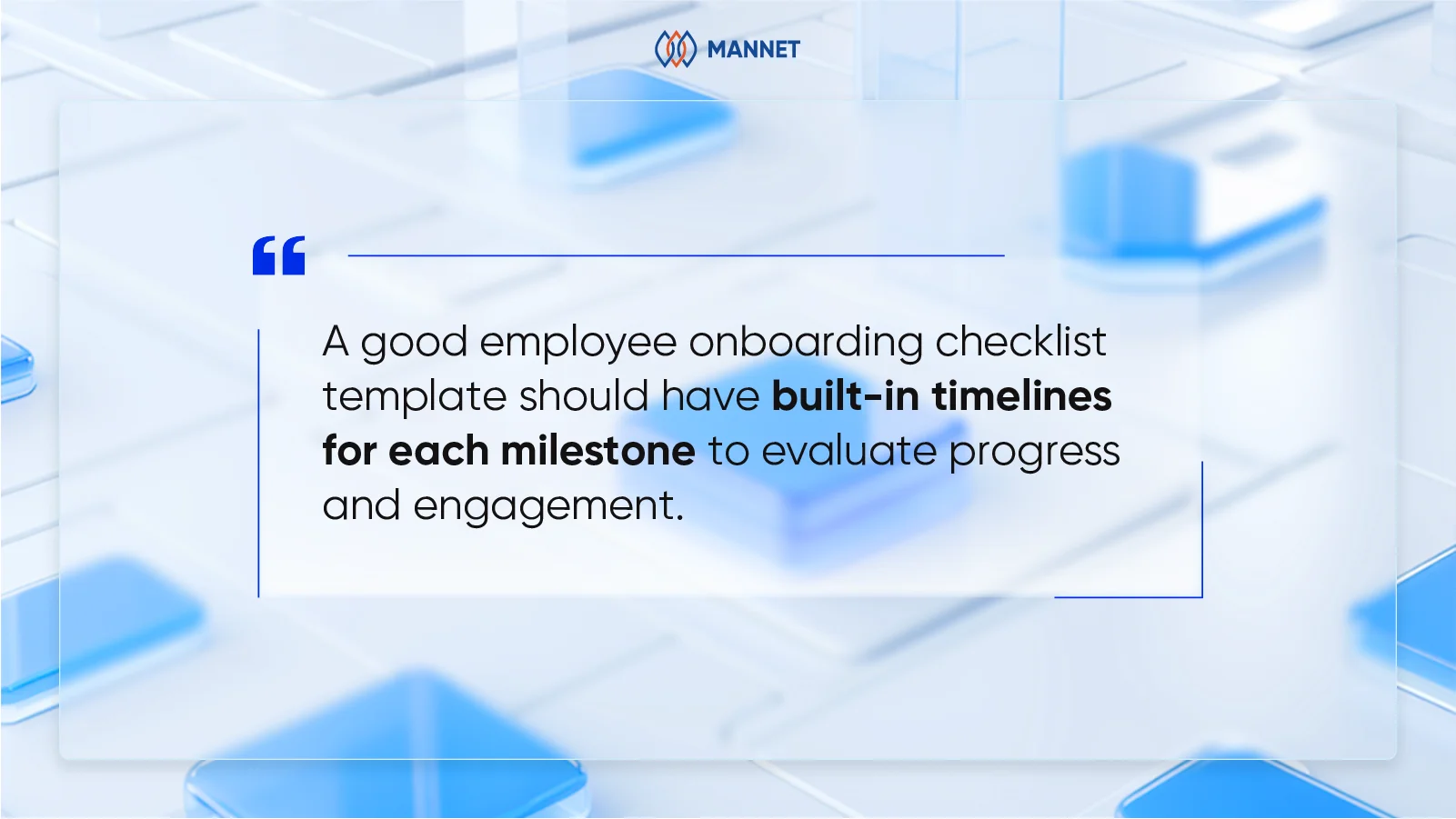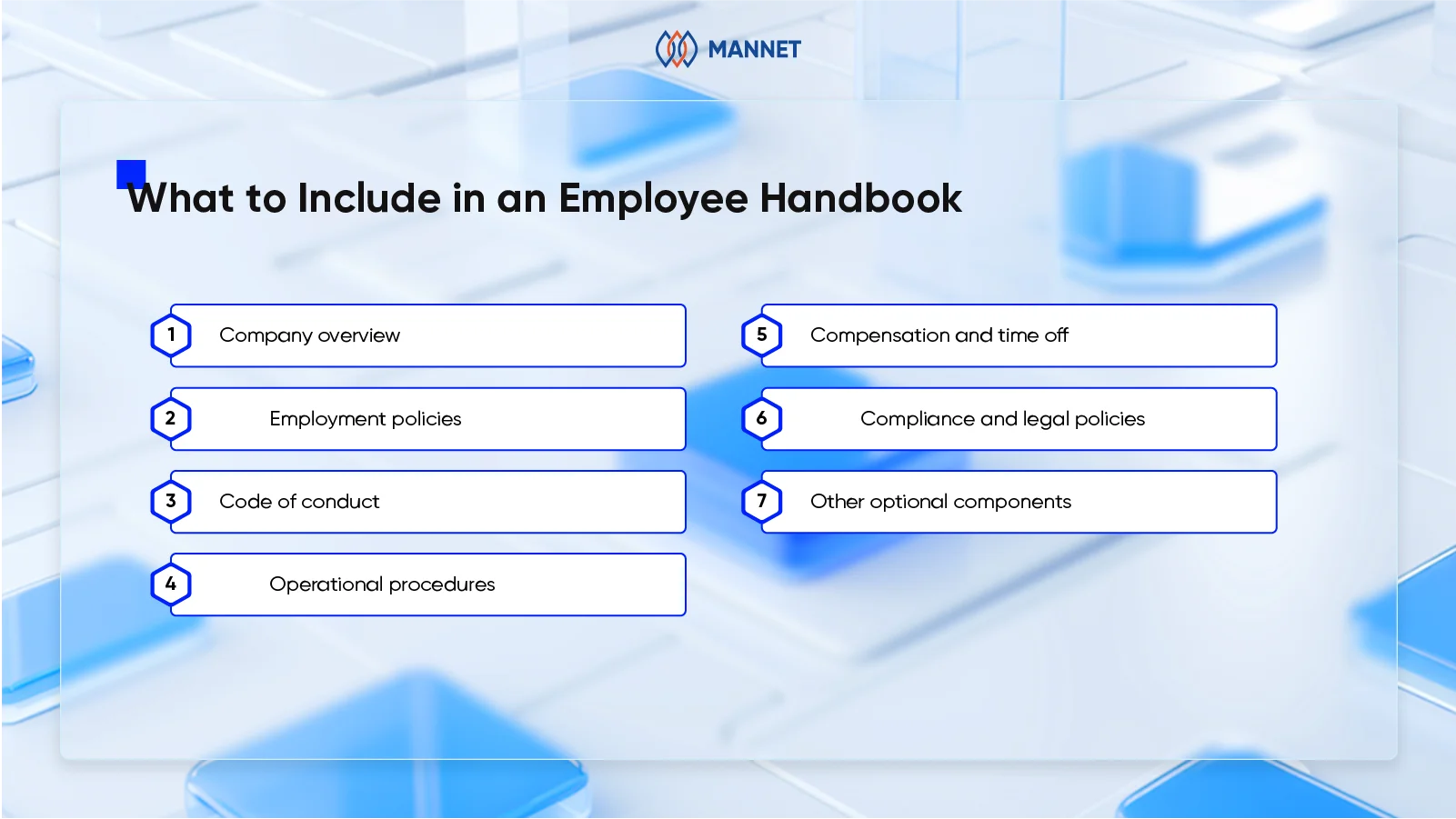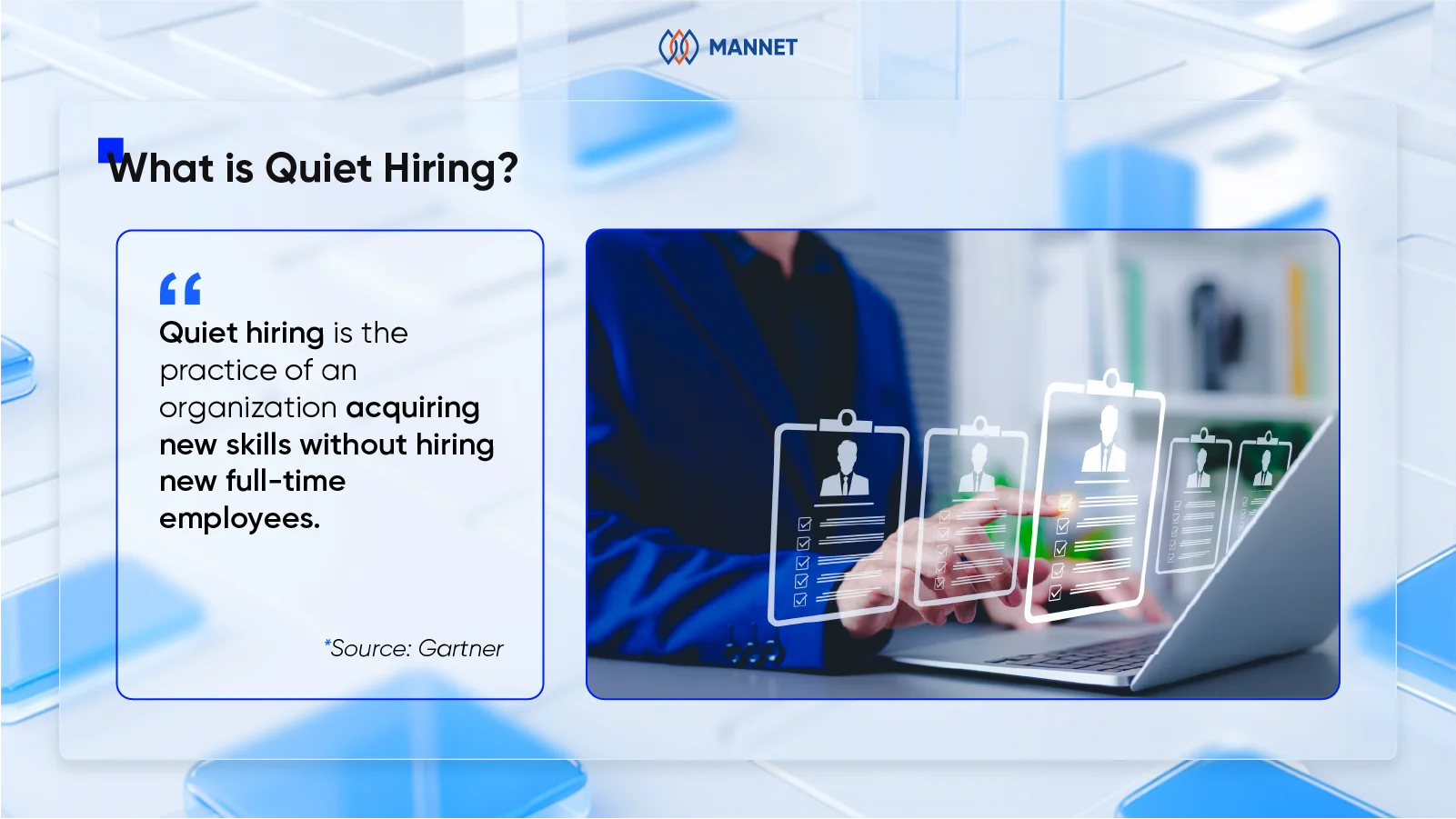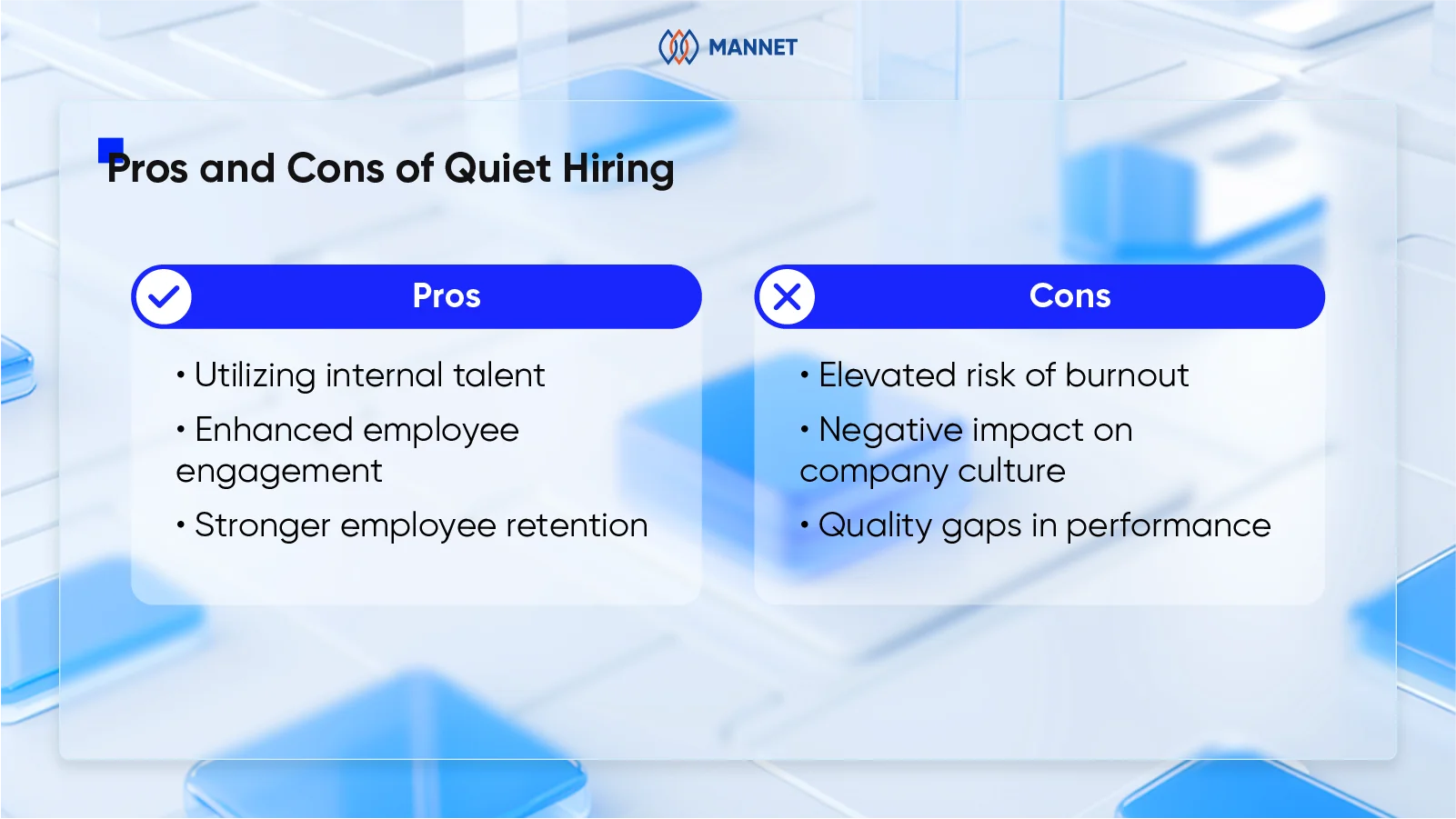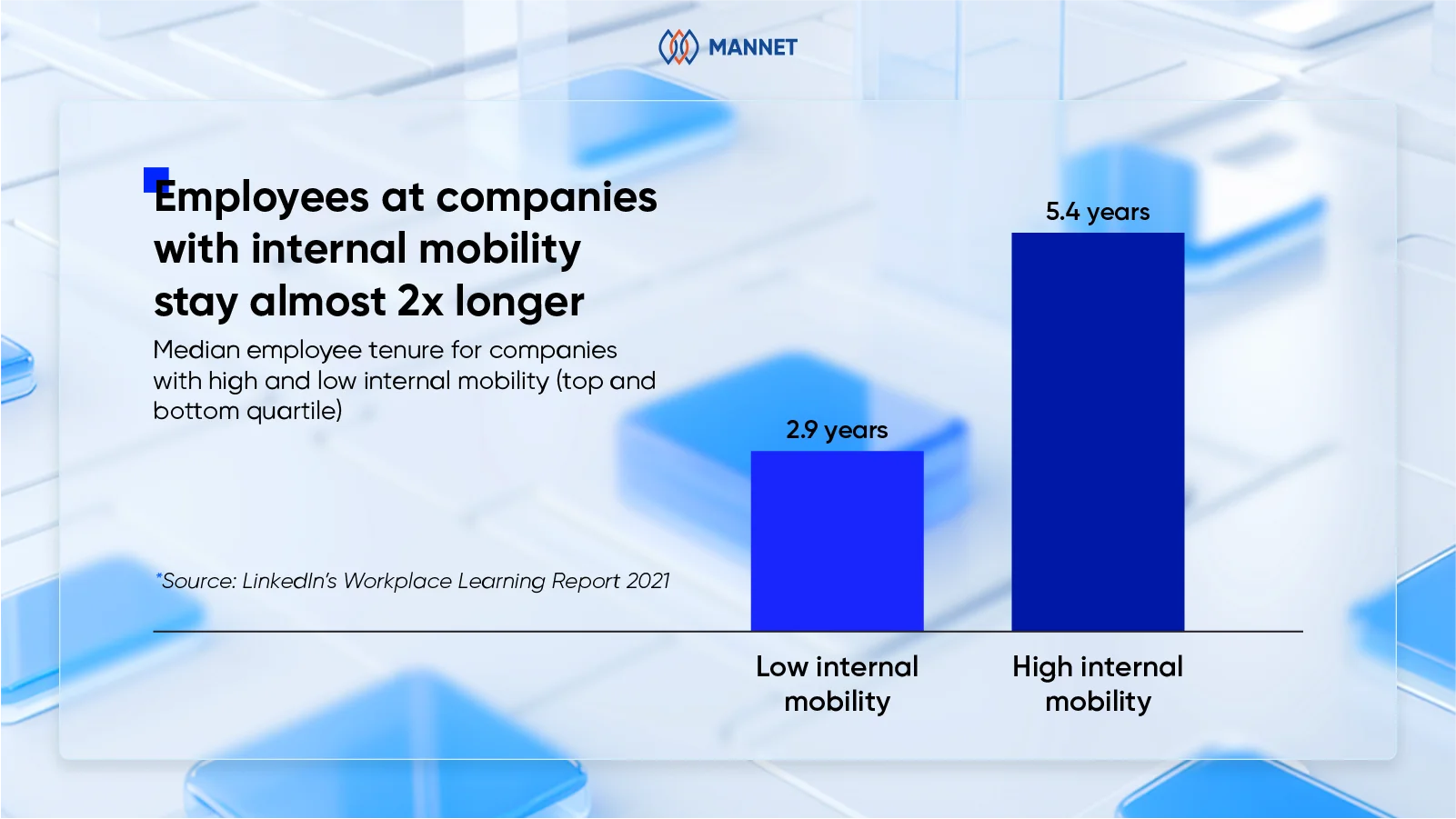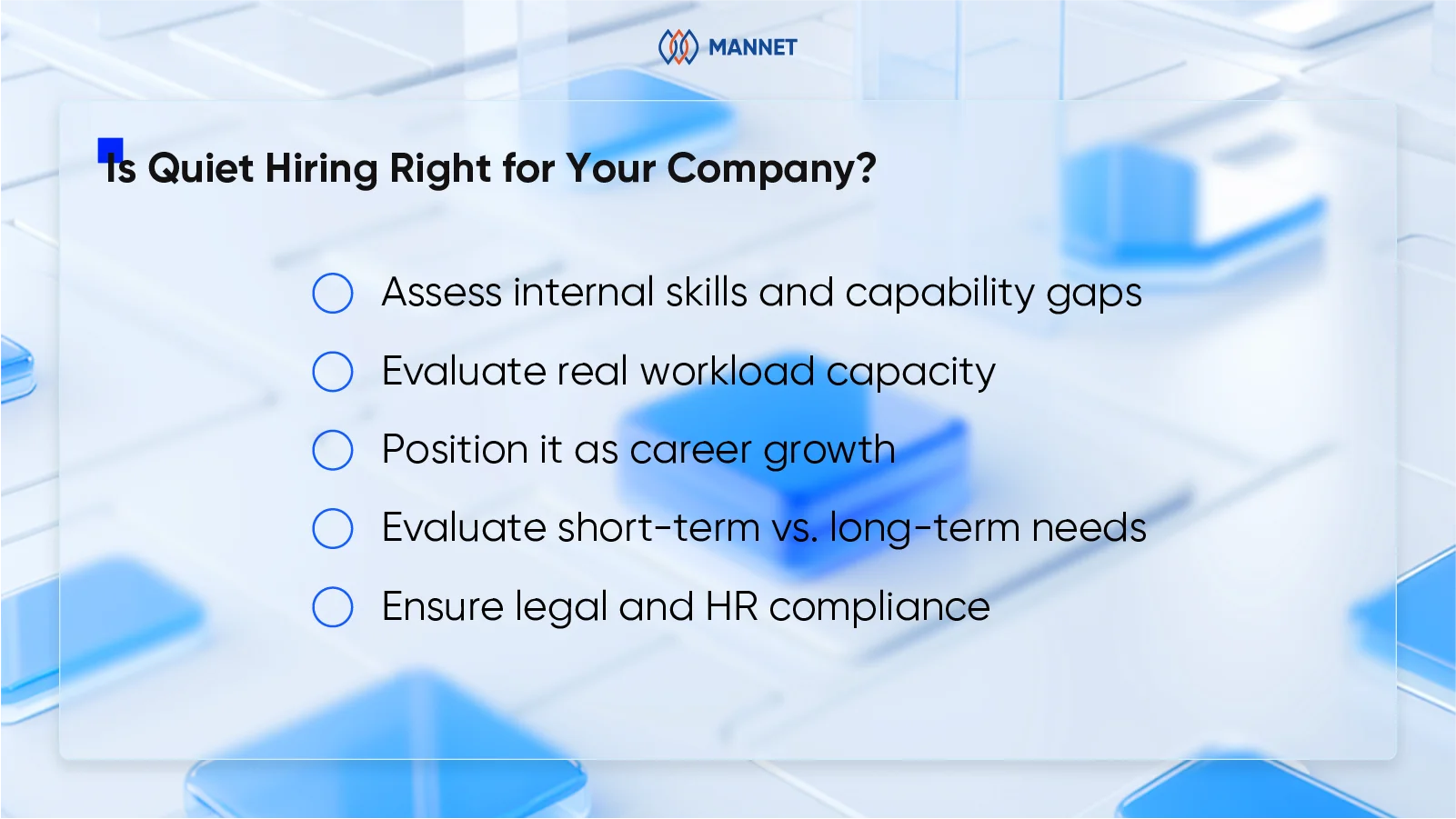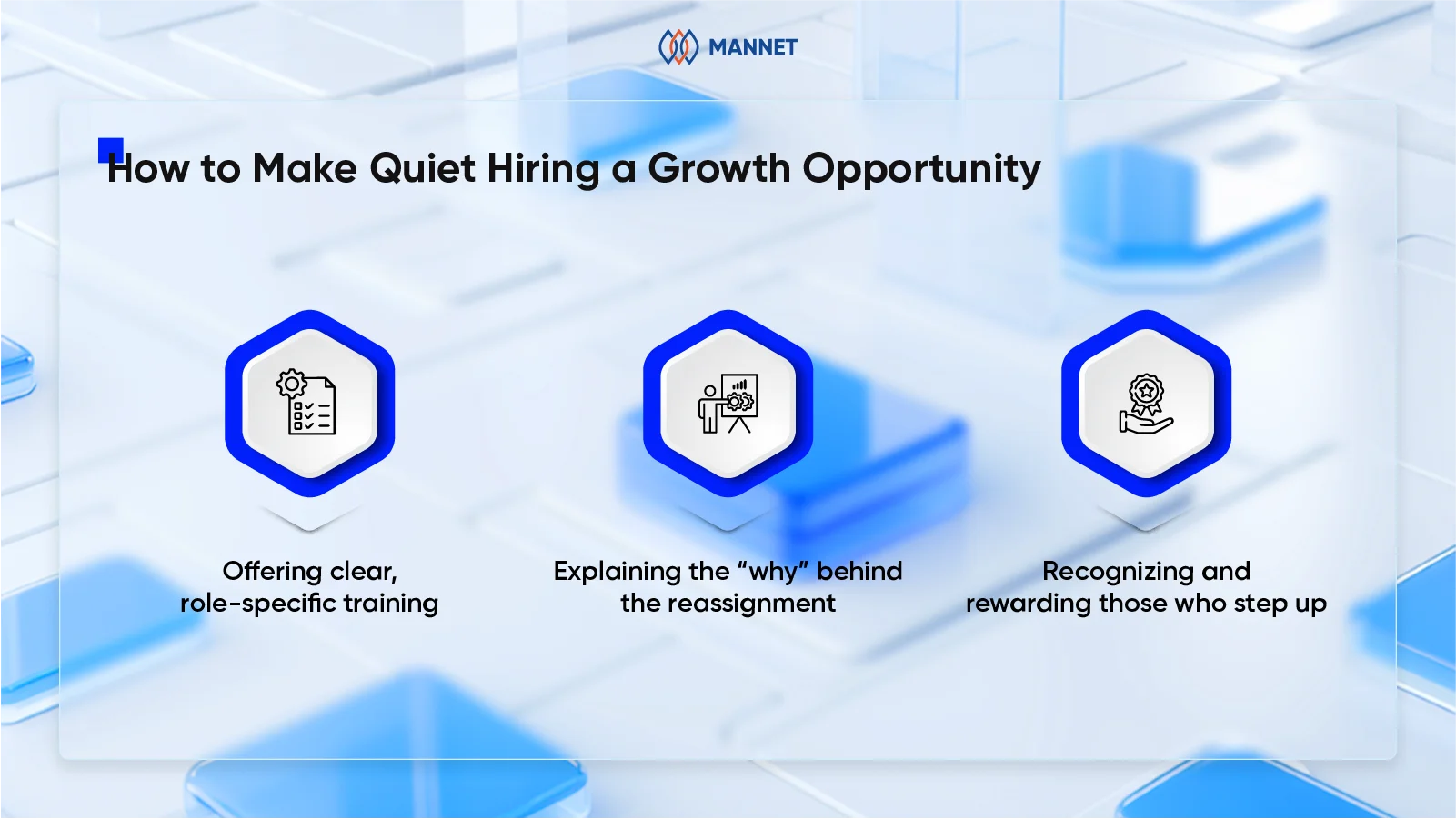Employee Skills Assessment: 8 Steps to Evaluate Workforce Competencies
According to the World Economic Forum, half of all employees will need to reskill by 2025 to keep up with rapid technological change. As a result, employee skills assessments are becoming an increasingly important tool for organizations shifting from a job-based to a skills-based approach to workforce management.
So how can businesses conduct employee skills assessment effectively?
This article answers that question by explaining what an employee skills assessment is, when organizations use it, and how to conduct and evaluate one in a fair and efficient way.
What is An Employee Skills Assessment?
An employee skills assessment is a structured process that evaluates employees’ knowledge and abilities. It measures performance, identifies skill gaps, improves workforce planning, and strengthens training programs.
Unlike traditional performance reviews that often focus on outcomes, skills assessments analyze the underlying capabilities contributing to those outcomes. These can include technical proficiency, soft skills, leadership potential, and domain-specific expertise.
For instance, a software developer may be evaluated on programming languages and debugging skills, while a project manager may be assessed on communication, strategic thinking, and stakeholder management.
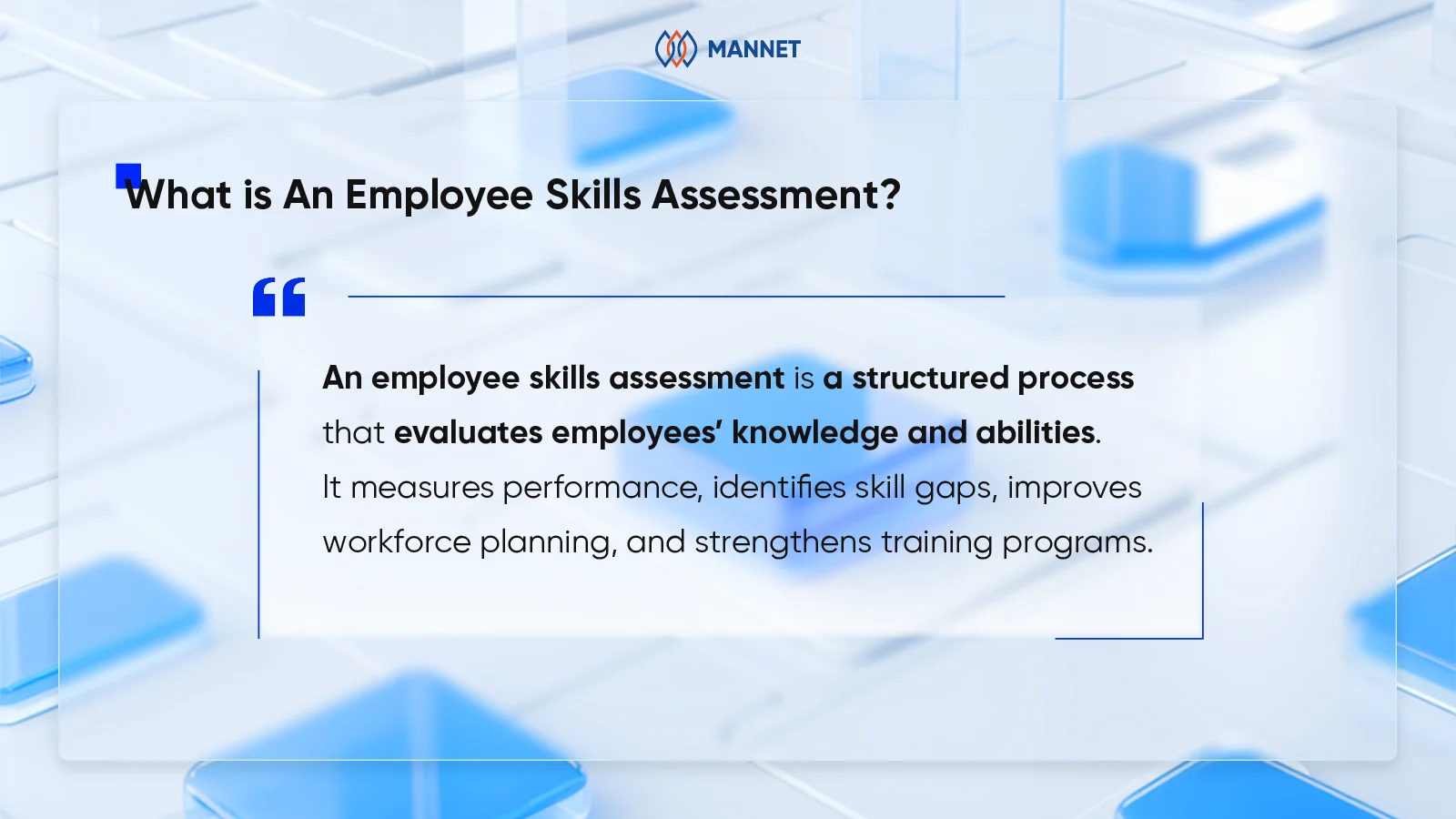
Employee skills assessment definition
When Do Organizations Use Employee Skills Assessments?
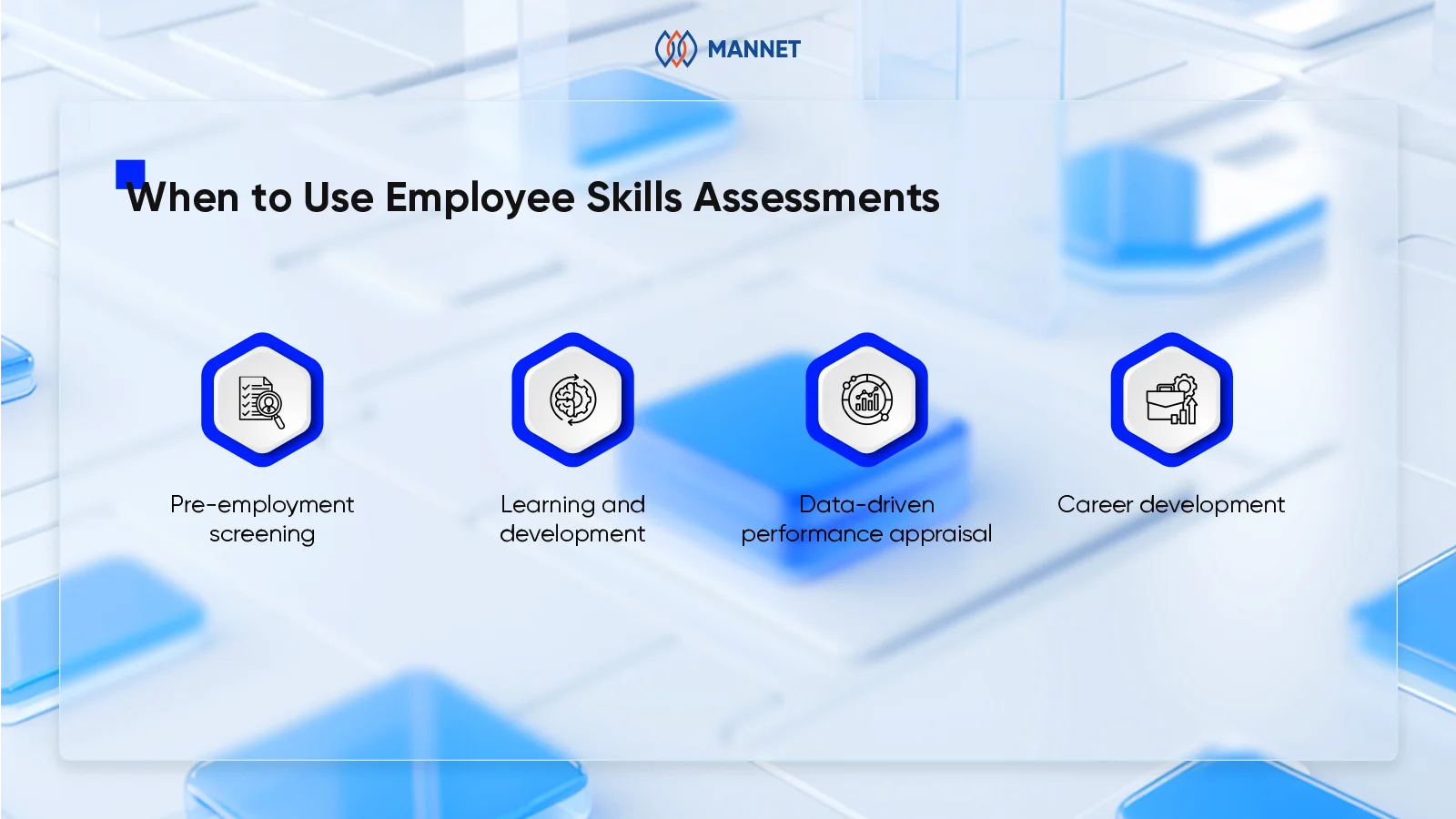
When to use employee skills assessment
Pre-employment screening
About 56% of employers use pre-employment assessments to gauge job applicants’ knowledge and skills, making hiring decisions more objective and aligned with job requirements from the start. By testing real-world competencies rather than relying solely on resumes or interviews, organizations can make more objective and informed hiring decisions.
Learning and development
Employee skills assessments provide data-driven insights that allow Learning and Development (L&D) teams to design targeted training programs. Instead of generic sessions, organizations can focus resources on addressing specific skill gaps. For instance, if assessments reveal that a team lacks proficiency in automation tools, the company can prioritize upskilling in that area.
Data-driven performance appraisal
Assessment results can be integrated into performance management systems to support objective evaluations. Managers can use these insights to set measurable KPIs, monitor growth, and evaluate employees based on verifiable skill metrics. This approach reduces bias, enhances transparency in performance reviews and promotion decisions.
Career development
Skills assessments also play a vital role in career growth. By identifying each employee’s strengths, interests, and potential, organizations can create personalized development roadmaps. These insights inform career discussions, guide mentorship programs, and support succession planning.
According to National Career Development Association, competency assessments encourage self-awareness, continuous improvement, and open dialogue between employees and managers, all of which significantly increase employee engagement and motivation.
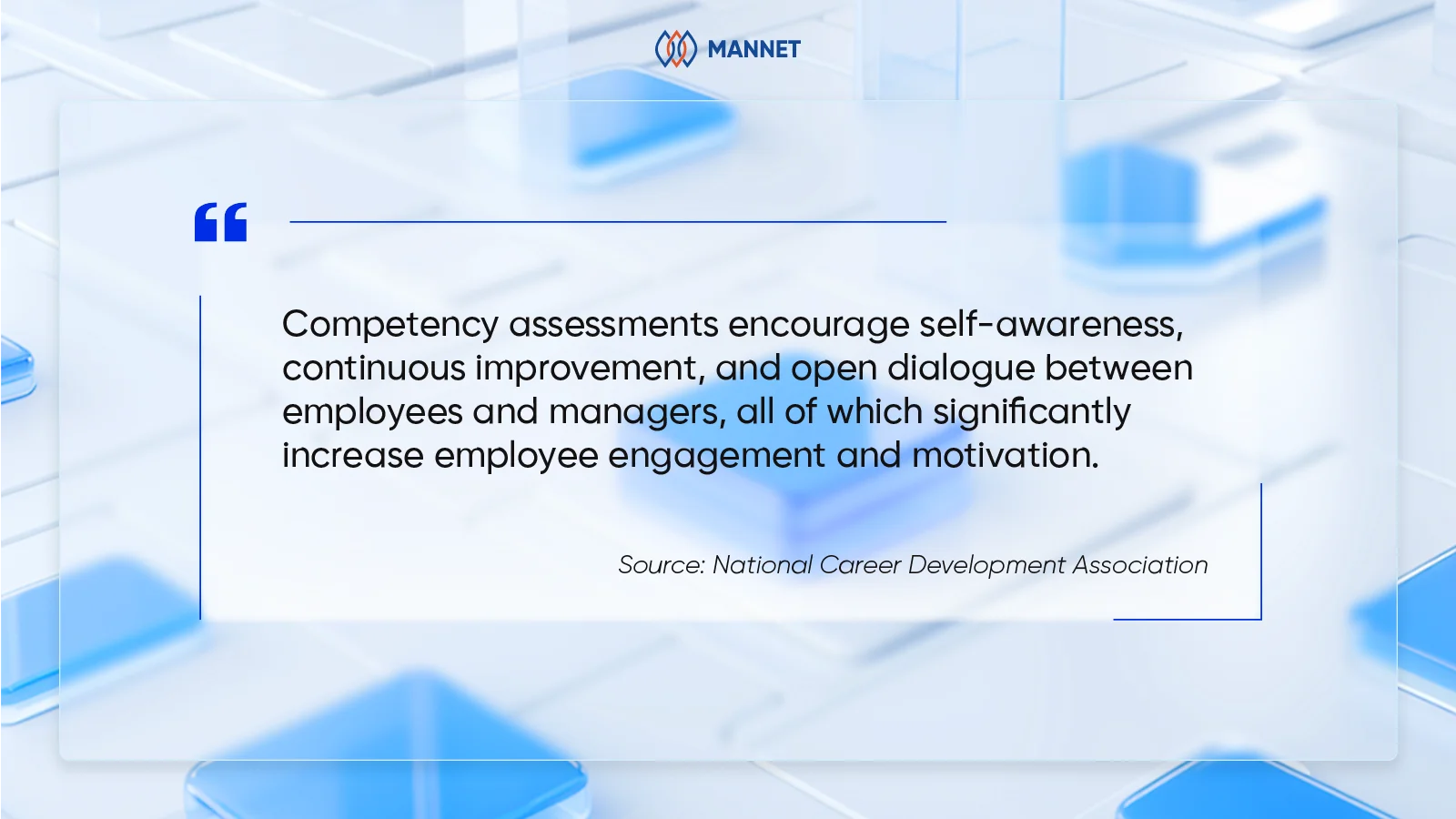
7 Effective Methods for Employee Skills Assessment
Below are 7 common methods organizations use to conduct skills assessments efficiently. But keep in mind that there’s no specific approach to evaluating employee skills. The most effective strategy depends on organizational goals, job functions, and available resources.
Managerial assessments
Supervisors evaluate employees based on direct observation and performance outcomes. This remains one of the most reliable methods, especially when paired with standardized evaluation frameworks to minimize bias.
Self-assessments
Employees rate their own proficiency levels across defined skills or competencies. This approach promotes self-awareness and encourages individuals to reflect on their strengths and weaknesses. When combined with managerial evaluations, self-assessment results reveal perception gaps that can guide meaningful conversations.
360-degree feedback
This approach gathers input from multiple perspectives: peers, subordinates, managers, and sometimes external partners provide a well-rounded view of an employee’s performance and interpersonal effectiveness. It is particularly valuable for assessing leadership, collaboration, and communication skills.
Skills tests and simulations
Skills tests measure practical abilities through real-world scenarios or problem-solving exercises. In IT and technical environments, this could include coding challenges, debugging tasks, or simulated troubleshooting sessions. These assessments provide objective data about functional expertise and job readiness.
Skill assessment software
Technology-driven tools like TalentGuard, iMocha, and other HR analytics platforms automate the evaluation process, offering scalable, data-rich insights into employee competencies. They can track progress over time, visualize skill gaps, and help HR teams align workforce development with business objectives.
Work sample assessment
Employees submit examples of their work, such as reports, presentations, or designs as evidence of their abilities. For creative and technical roles, reviewing work samples or portfolios offers tangible evidence of skill mastery. This method demonstrates not just what employees know, but how effectively they apply their knowledge in real projects.
Behavioral interviews
In behavioral interviews, candidates or employees are asked to share examples from their past work to demonstrate how they’ve tackled challenges, worked with teams, or made key decisions.
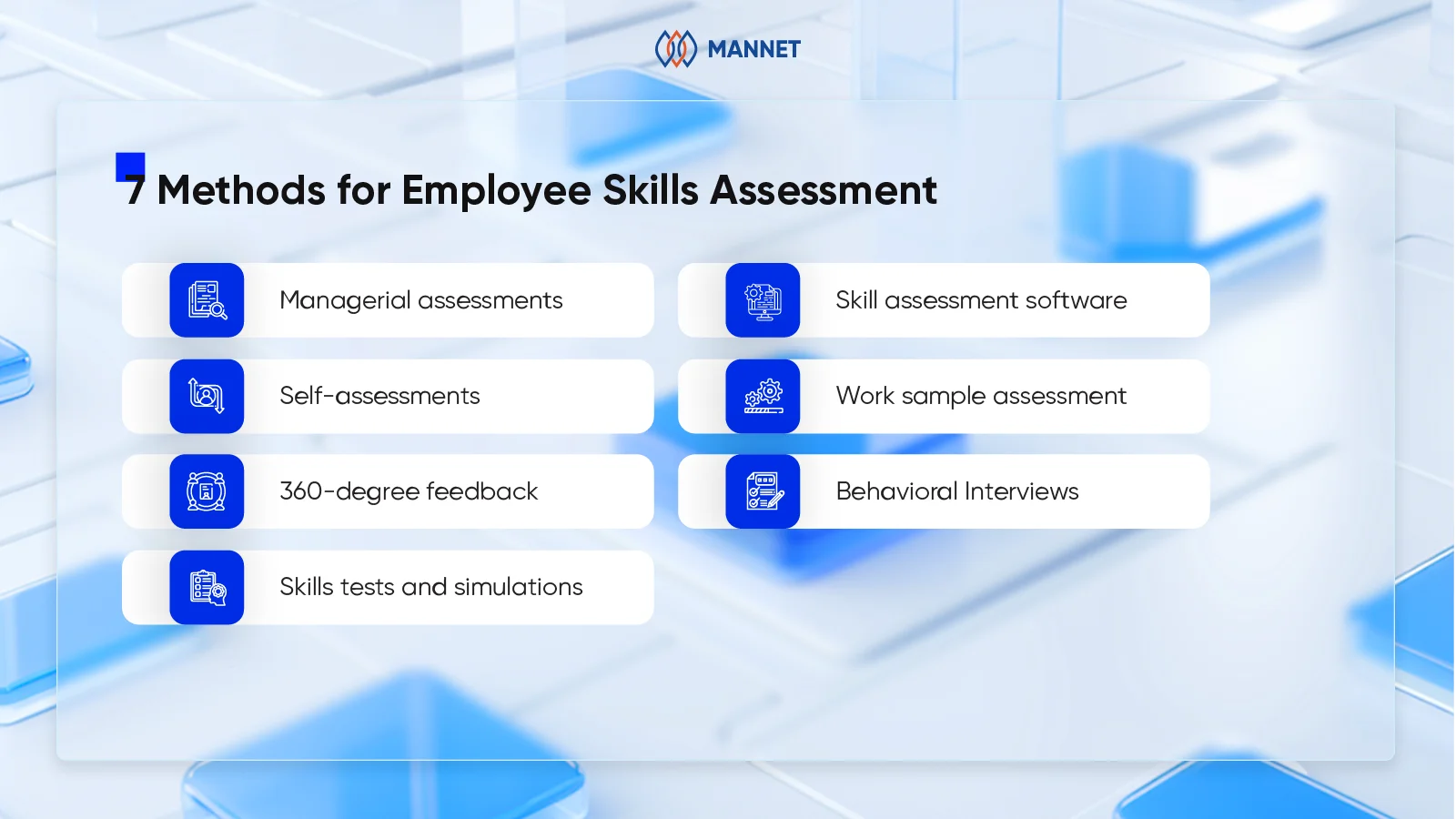
7 methods for employee skills assessment
How to Conduct An Employee Skills Assessment
To conduct a fair and effective employee skills assessment, businesses can apply the following 8 steps and then customize their approach to fit specific organizational needs and goals:
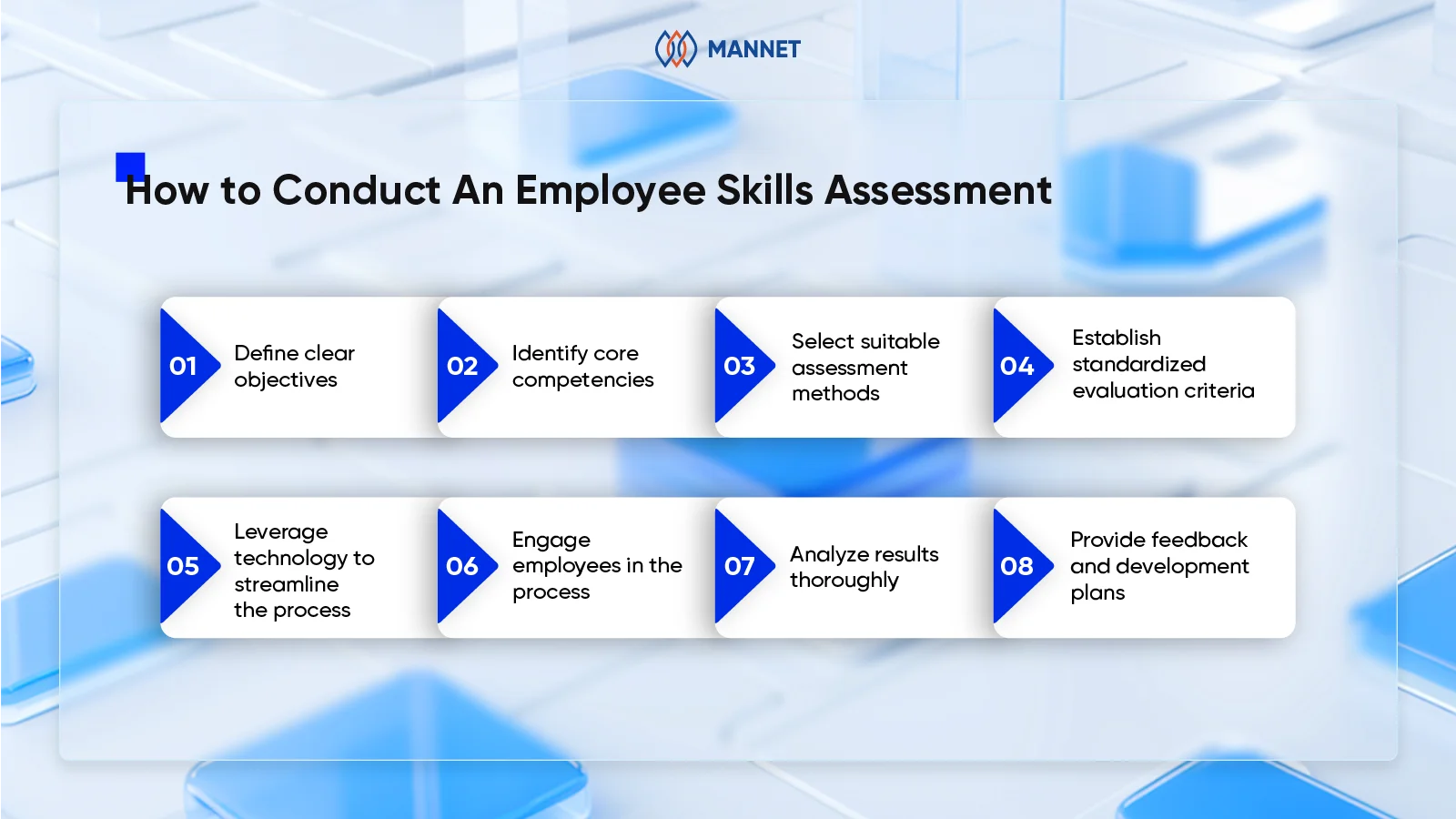
Steps to conduct employee skills assessment
Step 1. Define clear objectives
Before starting, define why the assessment is being conducted. Do employees need to upskill, is succession planning necessary, or is there a current skills gap that justifies new hires?
Then, align the reason to a business need (e.g., leadership development or digital transformation), and communicate objectives to the whole organization for transparency and support.
For example, an IT outsourcing company may want to measure cloud computing proficiency to prepare for client projects requiring AWS or Azure expertise.
Step 2. Identify core competencies
Collaborate with department heads and team leads to define what skills each role demands.
Companies can create a skills matrix or competency chart that categorizes required abilities by job function and proficiency level.
Step 3. Select suitable assessment methods
Select methods that best evaluate the chosen competencies. This can include any in the 7-method list mentioned above.
For technical roles, performance-based tests or simulations might work best. For managerial positions, 360-degree feedback or situational judgment tests may provide deeper insights. Hybrid approaches often yield the most accurate results.
Step 4. Establish standardized evaluation criteria
Set specific guidelines on how employees should be evaluated. For example, if a company choose a rating scale, explain the significance of the highest and lowest ratings. The company can also define or describe success at each competency level and train managers to maintain consistency and accuracy in evaluations.
For example:
- 5 = Expert (can teach others)
- 4 = Proficient (performs independently)
- 3 = Competent (requires occasional guidance)
- 2 = Developing (needs frequent support)
- 1 = Novice (requires training)
Step 5. Leverage technology to streamline the process
Use platforms like LinkedIn Learning or other HR and learning systems to automate parts of the process. Integrating these tools into the existing HR systems guarantees all data stays centralized and accessible. Additionally, companies can check out the analytics section for deeper insights into employee performance and skills.
Step 6. Engage employees in the process
Explain how results will be used for personalized development, promotions, and learning opportunities. Provide clear instructions for completing the assessments and establish open channels for feedback or questions. When employees understand the process and see tangible benefits, participation rates and honesty in responses increase.
Step 7. Analyze results thoroughly
Identify any skills gaps and areas of strength of each individual, as well as the collective strengths and weaknesses of different teams. Next, compare the results with industry standards and use the findings to help companies design L&D strategies and talent planning.
Step 8. Provide feedback and development plans
Once all assessments are completed, schedule a one-on-one discussion between the employee and their manager to review findings, celebrate achievements, and address areas for improvement.
During these meetings, focus on creating personalized development plans that outline specific goals, learning paths, and timelines. Encourage employees to take ownership by co-creating their plans, setting measurable milestones, and defining clear checkpoints for progress reviews.
FAQs About Employee Skills Assessment
- What is the purpose of an employee skills assessment?
The purpose is to evaluate employees’ capabilities and identify skill gaps, ensuring alignment between workforce competencies and organizational needs. It also guides recruitment, training, and succession planning.
- Can skills assessments be used during hiring?
Yes. Many companies integrate new employee skill assessments into recruitment to evaluate candidate suitability before hiring. This ensures new hires possess the technical and interpersonal skills needed for success.
- What are the challenges of conducting employee skills assessments?
Common challenges include bias in evaluation, lack of employee engagement, and insufficient follow-up on results. Organizations can overcome these issues by standardizing methods, fostering open communication, and linking assessments to tangible development programs.
- What’s the difference between performance reviews and skills assessments?
Performance reviews focus on outcomes – what was achieved, while skills assessments evaluate capabilities – how results were achieved. Together, they provide a holistic view of employee effectiveness and potential.
A Summary of Employee Skills Assessment
As automation, AI, and remote collaboration reshape industries, success increasingly depends on how well a company understands and cultivates its human capital. Implementing a structured employee skills assessment program allows employers to strengthen workforce planning, enhance internal mobility, and design more impactful training and development initiatives.
With deep experience in skill-based recruiting and evaluation, ManNet helps businesses identify candidates who fit both the role and the company’s direction. Whether you’re expanding your team or rethinking your talent strategy, get in touch with us to build a workforce that’s capable, adaptable, and ready for the future of your organization.

